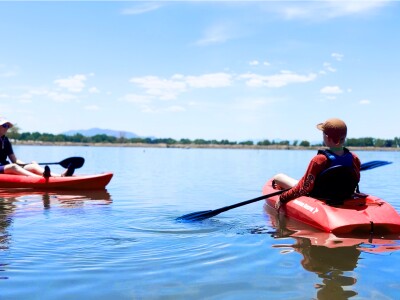Annual meetings next week
The World Bank has abandoned its practice of promoting development at the peril of the environment, concludes a recent study, contradicting claims by the bank's host of environmental critics ahead of the World Bank annual meetings Sep. 23-24.
Brigham Young University professor Daniel Nielson and Michael Tierney of the College of William and Mary studied the bank's lending patterns since 1980, which they say show that the World Bank has responded to demands to become more environmentally responsible for the projects it approves. Their report, which includes the first statistical analysis of environmental lending at the World Bank, is featured in a recent issue of the journal "International Organization."
"The World Bank is a lightning rod for criticism, drawing fire from environmentalists and globalization activists," said Nielson, a BYU assistant professor of political science. "It is the object of intense pressure and scorn, which is ironic because the data suggest the bank has undergone wholesale changes in its practices. There just hasn't been enough science examining the bank's behavior."
Nielson and Tierney are part of a group of 30 scholars from universities such as Harvard, Stanford, UC-San Diego, Columbia and Duke trying to understand how governments control international organizations. The two were particularly interested in how the World Bank responded to demands for reform from its largest shareholder, the United States. The researchers found significant improvements in lending behavior after 1985 and 1992, years when congressional leaders turned up the pressure on the World Bank by threatening to withdraw funding.
"Changing the bank was like turning an ocean liner – it took time," Nielson said. "But we find it useful to think of the bank as an employee, or agent, of the governments sponsoring it."
The World Bank's traditional approach to assisting poor countries was through loans for massive infrastructure projects, which were commonly approved without substantial environmental impact assessments. One of the most notorious examples is Brazil's highway project for the state of Rondonia, which constructed a road in the 1980s through the heart of the Amazon rain forest. Settlers poured into the jungle upon completion of the highway, clearing vast tracts of forest and importing diseases deadly to the indigenous people. Rondonia and other disasters spurred the formation of activist groups whose protests have become a routine part of the bank's spring and annual meetings.
"Since World War II, the bank poured concrete for dams, roads, bridges, sewer systems – mostly big-ticket infrastructure," Nielson said. "Protecting the environment wasn't a high-priority issue until the '70s, so for a long time the bank was just doing what its member governments demanded."
Nielson and Tierney studied all the loans made between 1980 and 2000 and broke them down into five categories: traditional, agriculture, finance, social and environment. In 1980, traditional loans made up almost half of the bank's portfolio. By 1998, both social and environmental projects had become the most common types of lending. Environmental projects alone now constitute 17 percent of financed projects, such as the $85 million loan approved in August to restore part of the nearly empty Aral Sea in Kazakstan.
"The World Bank has changed its behavior in a fundamental way," said Nielson. "Education, health and environmental projects now outweigh traditional loans. The bank is lending more money to improve the environment, but, more importantly, the bank is lending less money for the types of projects that damage the environment."
Writer: Joseph Hadfield



